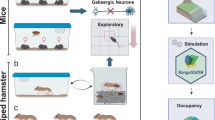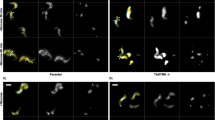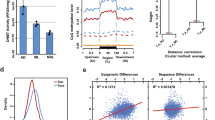Abstract
ENDOPARASITISM has hitherto been considered exceptional among the trombiculid mites and confined to the two genera Hannemania and Endotrombicula, the larvæ of which bury themselves in the skin of amphibians. Recent discoveries have, however, shown that endoparasitism is much more widespread among the Trombiculidae than has been suspected. Some of the endoparasitic forms are indeed very common but have been overlooked. Two distinct habits are recognized: burrowing in the skin, and living in the nasal cavities.
This is a preview of subscription content, access via your institution
Access options
Subscribe to this journal
Receive 51 print issues and online access
$199.00 per year
only $3.90 per issue
Buy this article
- Purchase on SpringerLink
- Instant access to full article PDF
Prices may be subject to local taxes which are calculated during checkout
Similar content being viewed by others
References
Vercammen-Grandjean, P. H., Rev. Zool. Bot. Afr., 48, 17 (1953).
Jadin, J. B., Vercammen-Grandjean, P. H., Herman, F., Thienpont, and Fain, A., Rev. Zool. Bot. Afr., 49, 9 (1954). Jadin, J. B., and Vercammen-Grandjean, P. H., Rev. Zool. Bot. Afr. (two papers in the press).
Audy, J. R., Stud. Inst. Med. Res., Malaya, No. 26, 159 (1954).
Author information
Authors and Affiliations
Rights and permissions
About this article
Cite this article
AUDY, J., VERCAMMEN-GRANDJEAN, P. Endoparasitism in Trombiculid Mites. Nature 175, 263–264 (1955). https://doi.org/10.1038/175263b0
Issue date:
DOI: https://doi.org/10.1038/175263b0
This article is cited by
-
Ectoparasites of murids in peninsular Malaysia and their associated diseases
Parasites & Vectors (2015)
-
Stylostome formation in trombiculid mites (Acariformes: Trombiculidae)
Experimental and Applied Acarology (2009)



